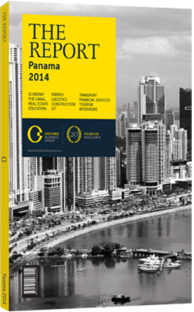Location, location, location: Colón Free Zone is seeing increasing demand from distributors
Panama’s advantages as a regional base for Latin America are of primary interest to international distributors. Its location along some of the world’s busiest trade lanes, the Panama Canal, a dollarised economy, stable political environment, and tax and fiscal incentives have all contributed to Panama’s proven ability to attract international players to its shores. Distribution firms now make up many of the 100-plus foreign companies that have established regional headquarters in country. Consumer electronics, textiles and machinery feature strongly, with the list including global names such as Adidas, Hewlett-Packard, Caterpillar and L’Oréal.
Demand
The country has anchored these advantages through the establishment of the Colón Free Zone (CFZ), located on the country’s Atlantic coast. Spread over a total surface area of 450 ha and home to 2500 businesses, the CFZ is the largest duty-free zone in the region and second in size only to Hong Kong’s international free zone. Over the years, companies from across the region, the US, Europe and Asia have been attracted by the fiscal incentives on offer at the CFZ. As of September 2013, the facility recorded close to $21bn in transactions, largely comprised of sales to markets in the region, such as Puerto Rico (25%), Venezuela (15%), Colombia (12%) and Costa Rica (6%). Nevertheless, the zone’s success has become part of its biggest challenge. It is faced with overcrowding resulting in congested traffic, deficient public utilities and a waiting list of hundreds of firms looking to set up shop. In response, the authorities are rolling out a development plan for its extension and multimodal integration. As such, the zone’s surface is being expanded to Coco Solito, an adjacent town, where a further 114 ha is targeted for new storage, processing and exhibition facilities. In addition, works are ongoing to integrate the zone with the facilities of the three neighbouring ports, including the Manzanillo International Terminal, Cristóbal and the Colón Container Terminal. Meanwhile, the capacity of the Panama Canal Railway, which links to the CFZ, has been increased to 500,000 twenty-foot equivalent units annually, offering an alternative for the transportation of container cargo through the canal. Other efforts include the expansion of the Enrique Adolfo Jiménez Airport to allow for the arrival of jumbo cargo planes and an improvement in its connection to road infrastructure linking it to the port of Balboa on the Pacific coast.
While most of zone’s transiting cargo is destined for regional markets, excess volumes often make it into Panamanian retail stores, helping to diversify the retail offering and keeping prices low. “Most of Panama’s dominant retail chains have a presence in the CFZ, which facilitates the entrance of excess supplies onto the local market,” Juan Luis Correa, vice-president of corporate affairs of Grupo Wisa, a local retailer, said. Following a 40% devaluation in February 2013 and strict foreign exchange controls, Venezuelan businesses have struggled to pay their bills to CFZ-based distributors. Media reported the outstanding debt reached $1.2bn in August 2013. At the same time, Colombia has hiked taxation of textiles and shoes coming from the CFZ.
Evolution
However, the broader outlook for the CFZ – and Panama’s profile as a regional distribution base – remains unaffected, with a growing number of foreign firms establishing partnership with local distributors. One such example is Damco, the logistics arm of Danish conglomerate AP Moller-Maersk, which signed a deal with Panamanian firm Exclusive Brands Logistics for the construction of a distribution base that will handle, package and label 35,000 cu metres of clothes per year. “The current evolution in Panama’s logistics infrastructure will be a game-changer for inbound supply chains from Asia to the Americas,” Alison Clafin, Damco’s chief commercial officer for Latin America, told local media. “Customers looking to develop regional distribution solutions will be able to move decision-making much closer to the final markets and react more quickly to changes in supply and demand, ultimately providing better service to their end customers.”
You have reached the limit of premium articles you can view for free.
Choose from the options below to purchase print or digital editions of our Reports. You can also purchase a website subscription giving you unlimited access to all of our Reports online for 12 months.
If you have already purchased this Report or have a website subscription, please login to continue.

